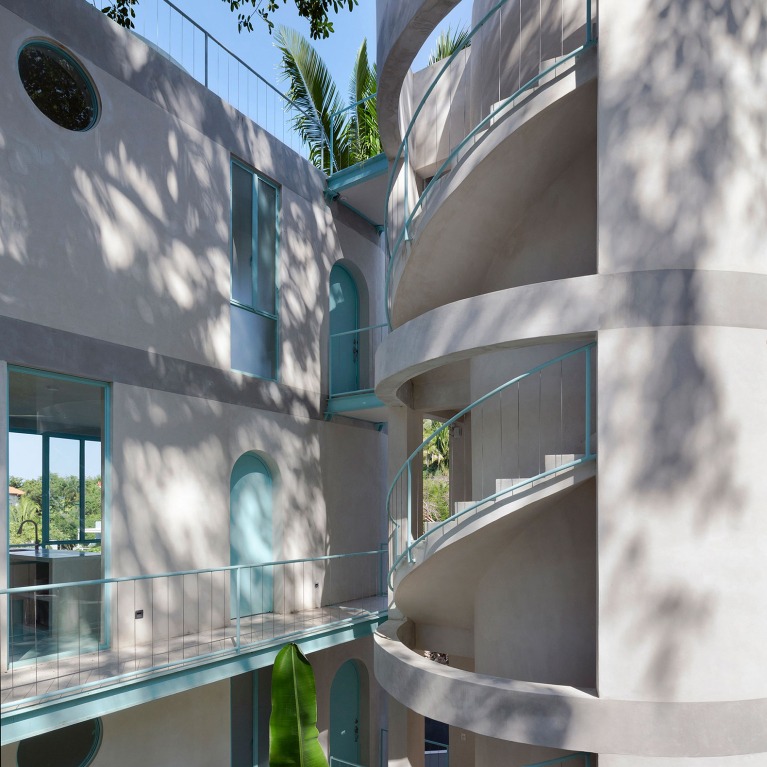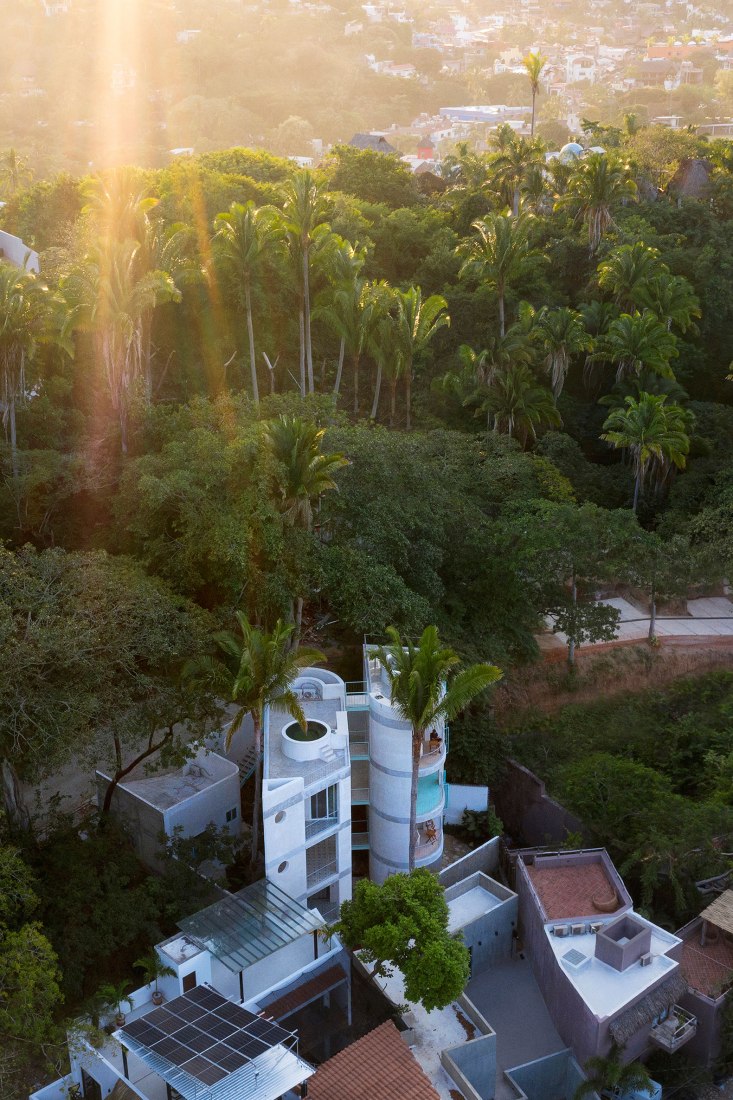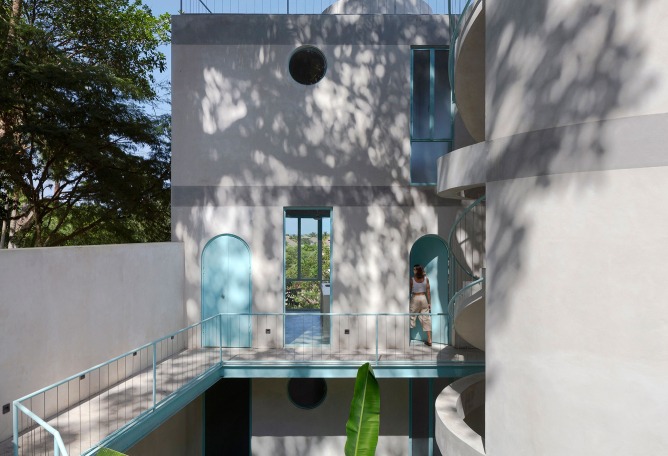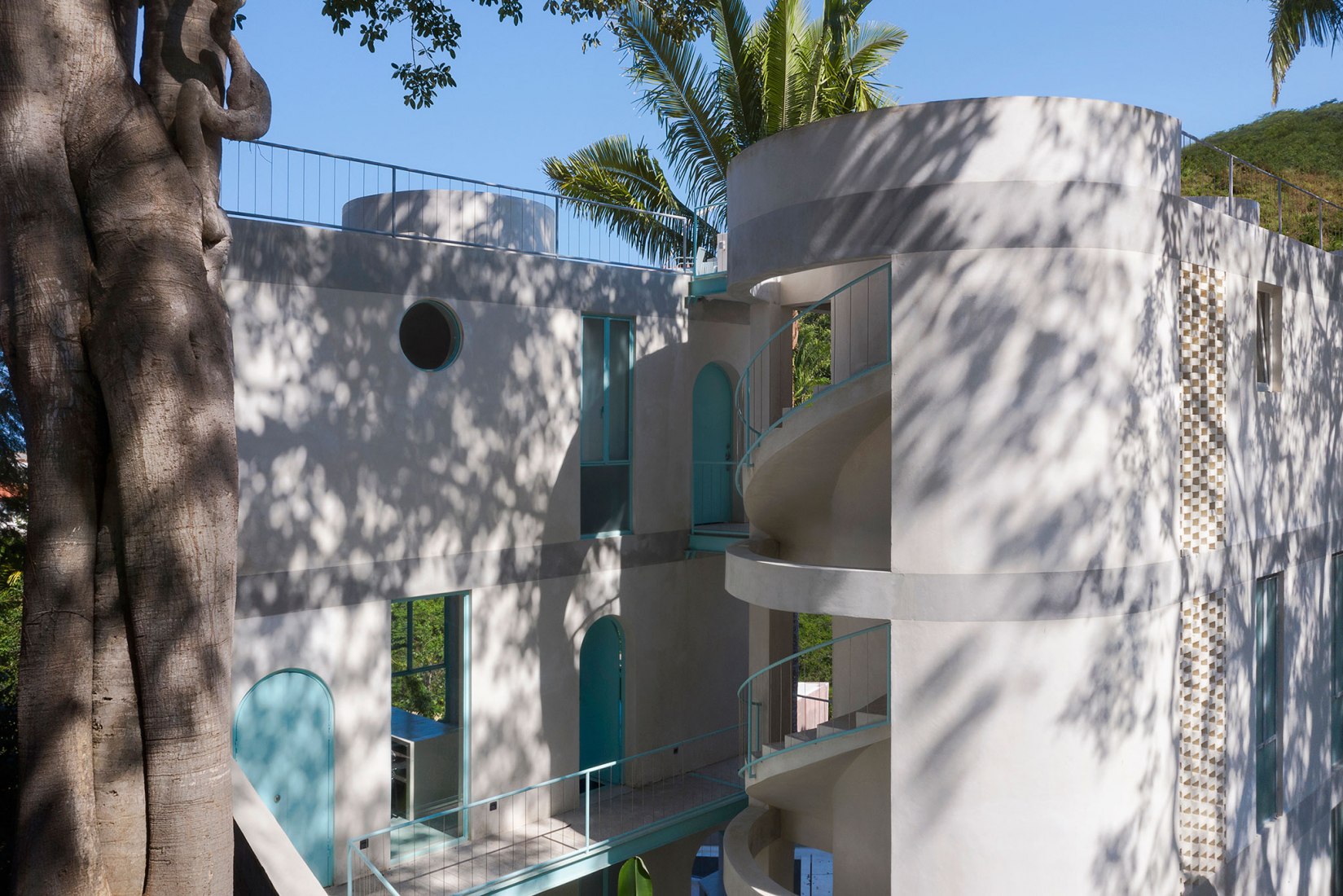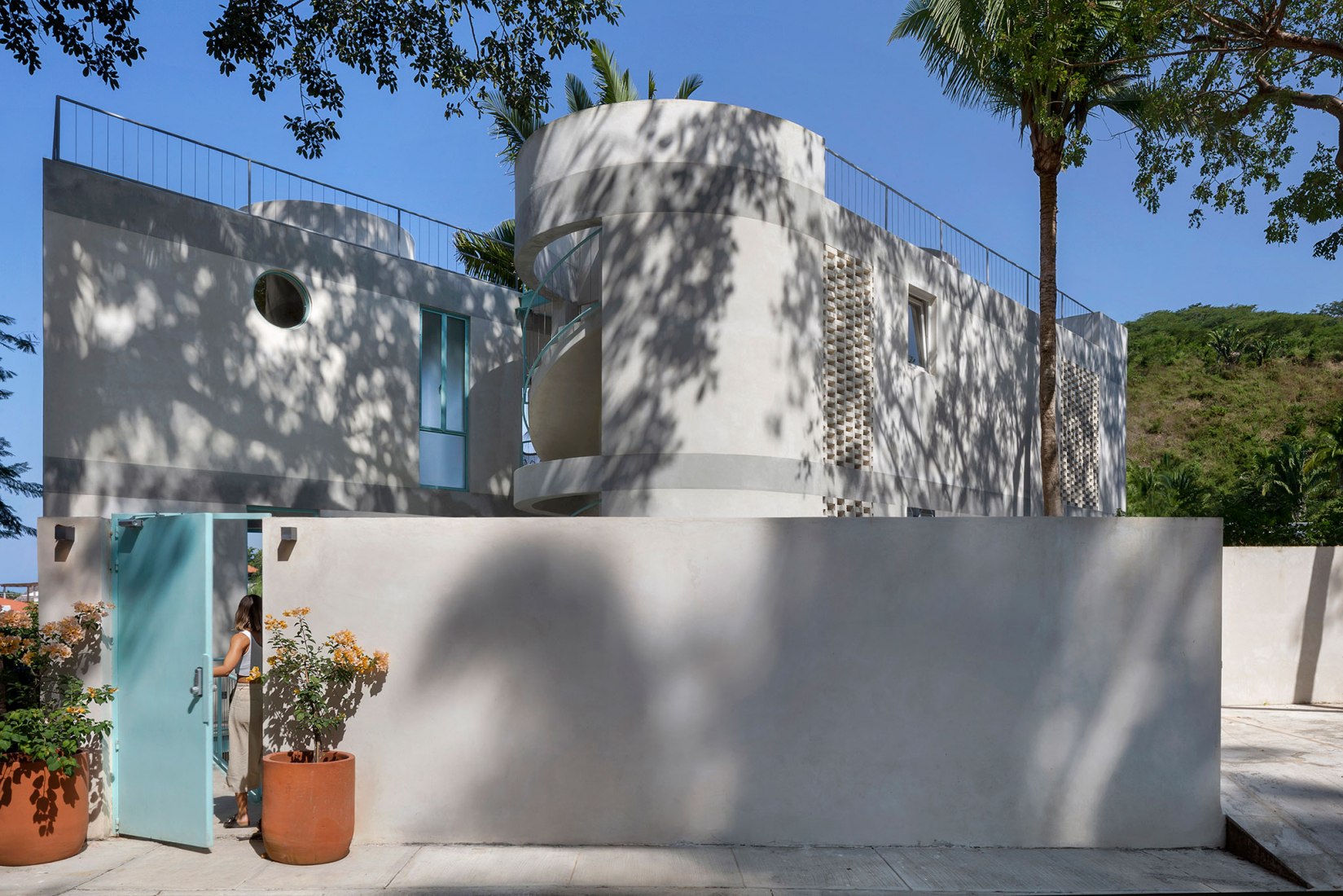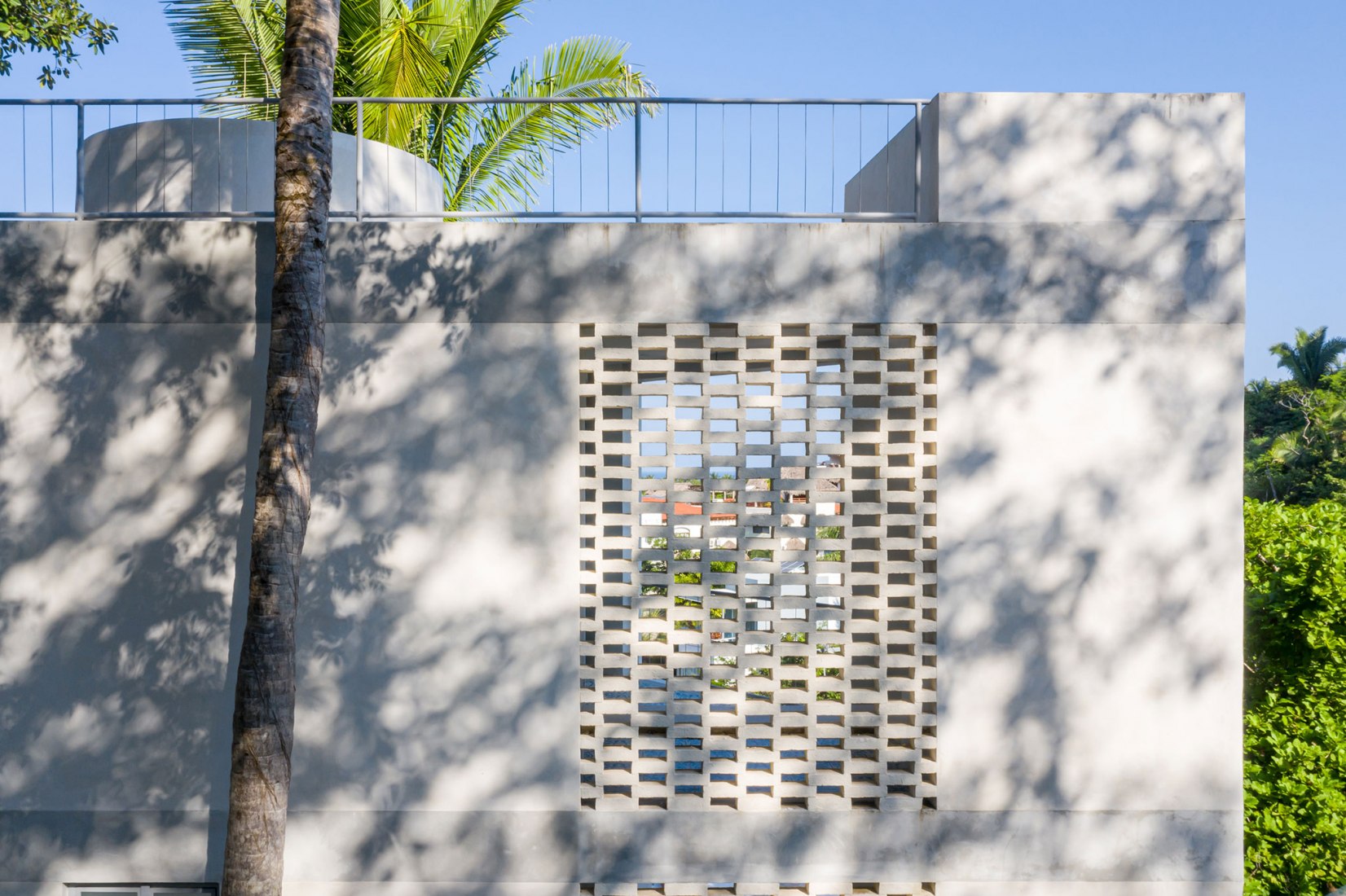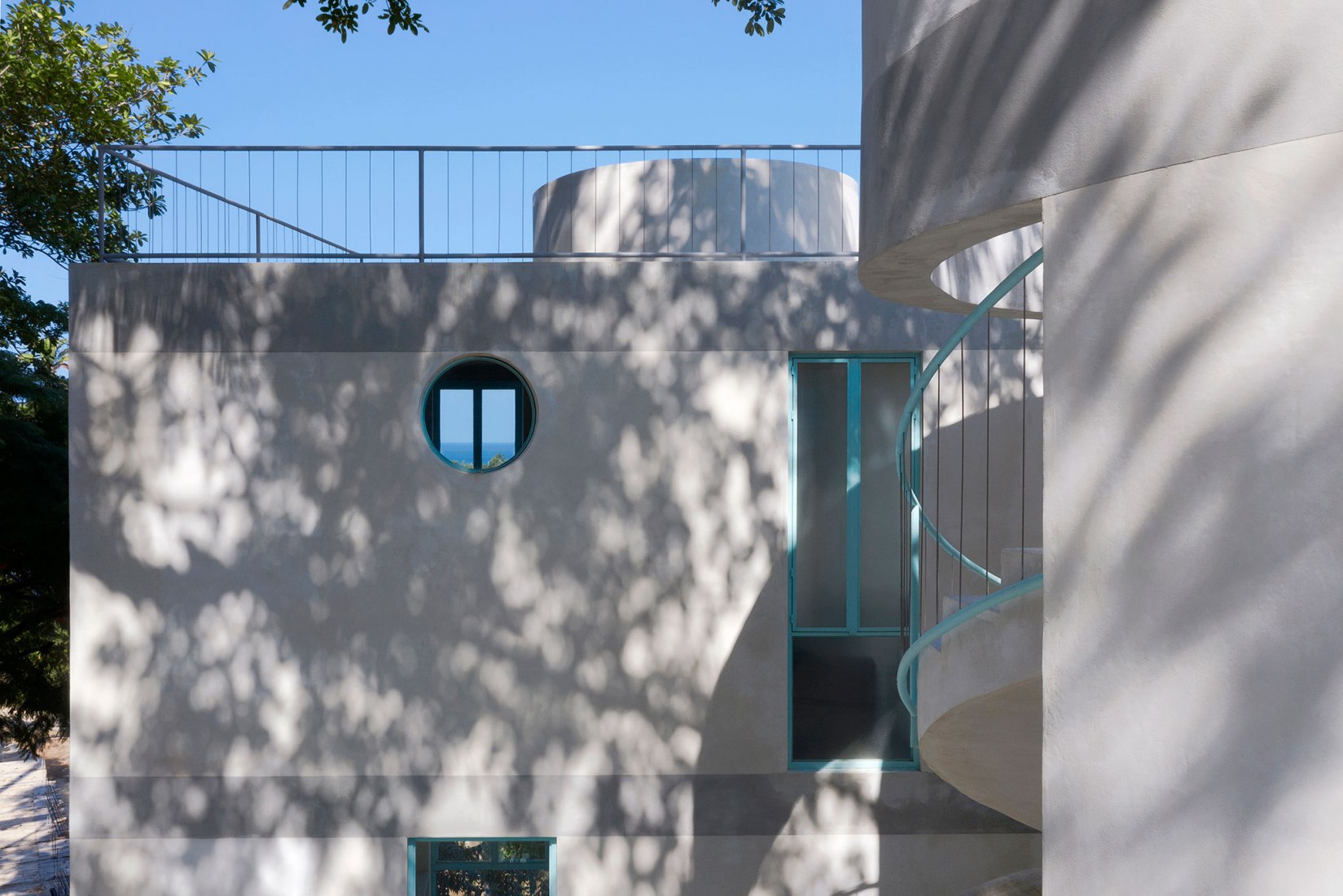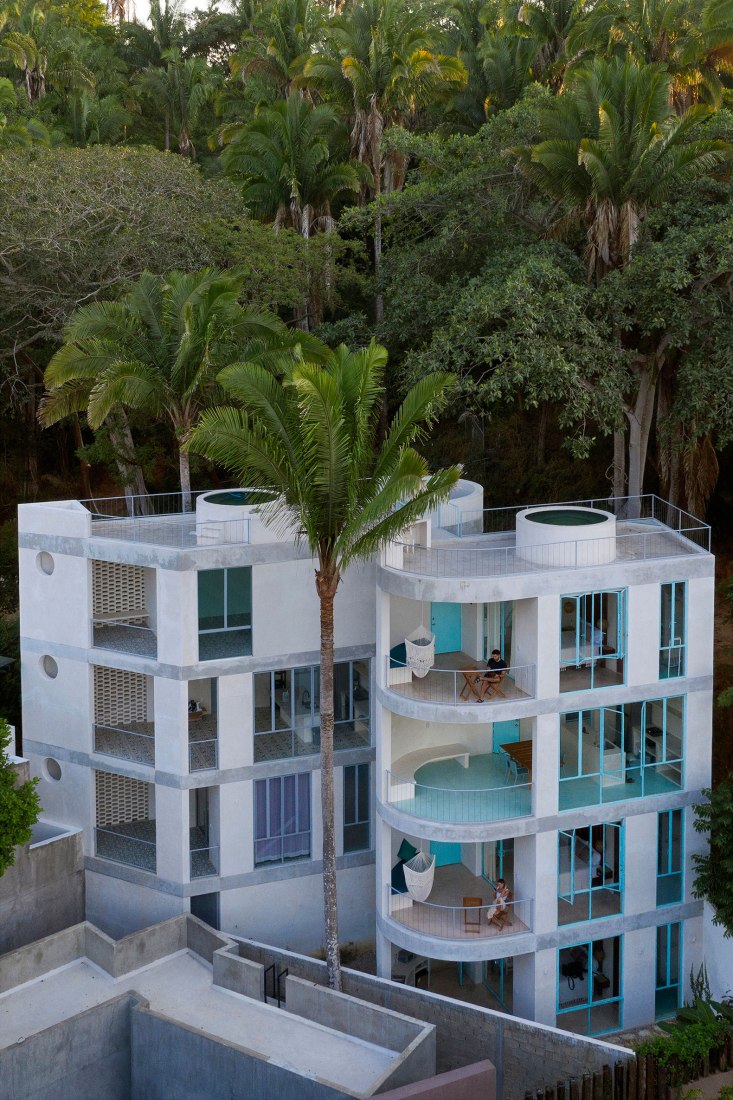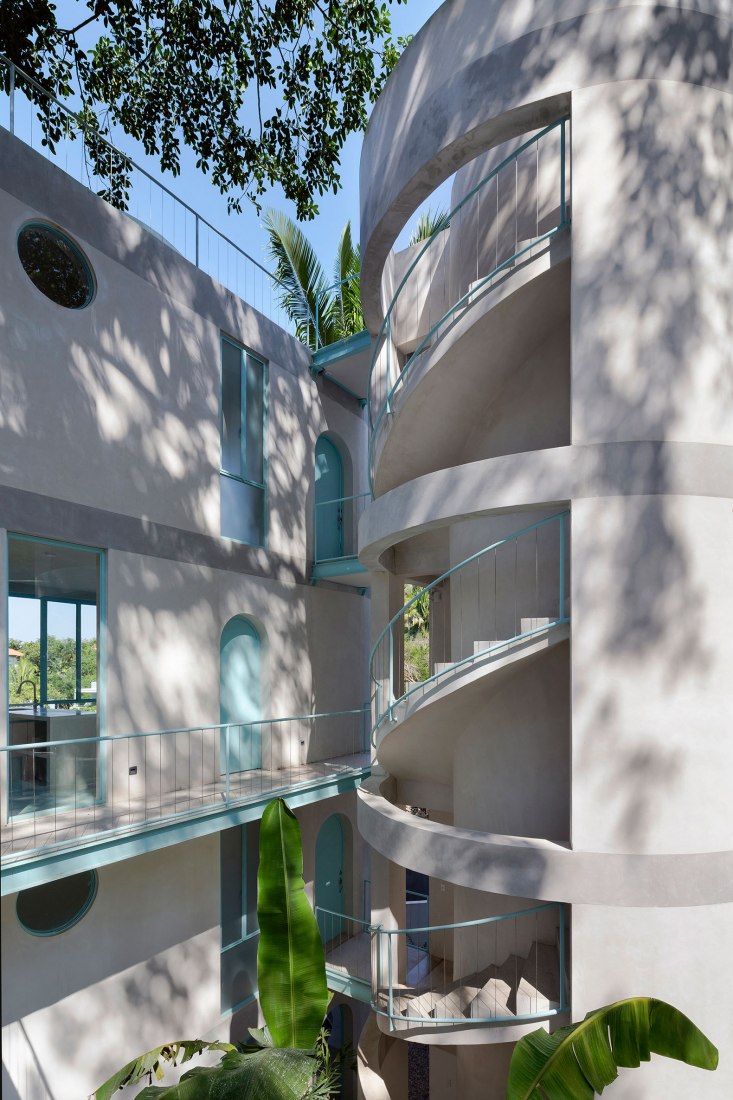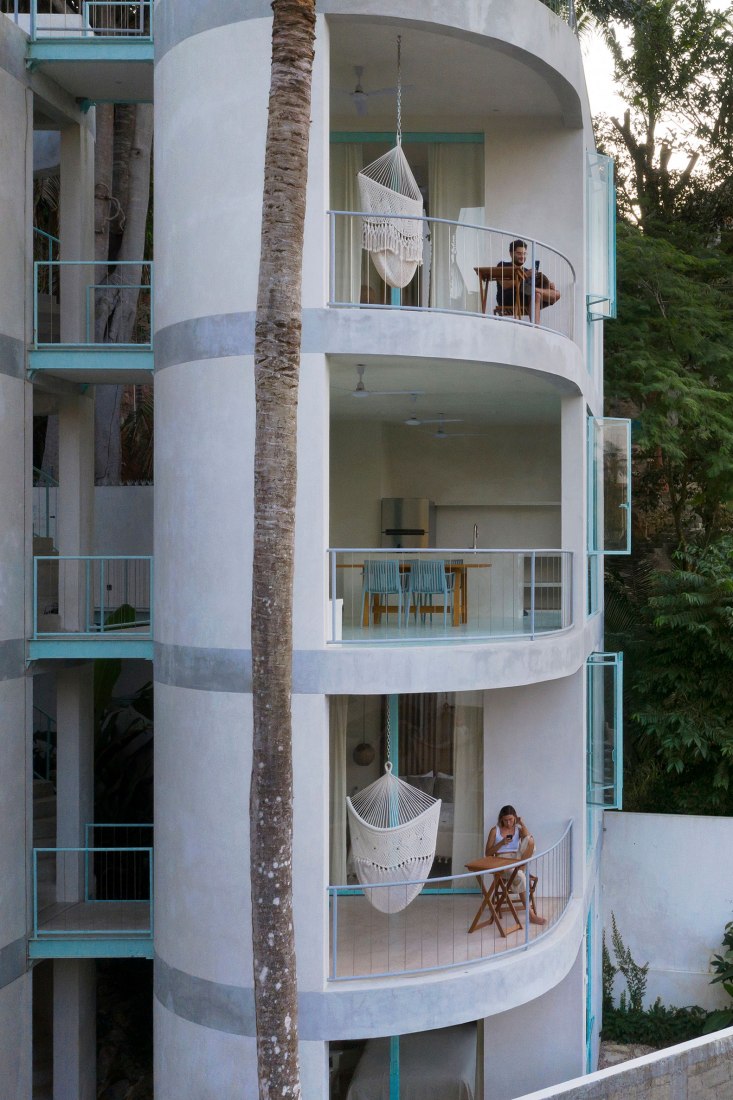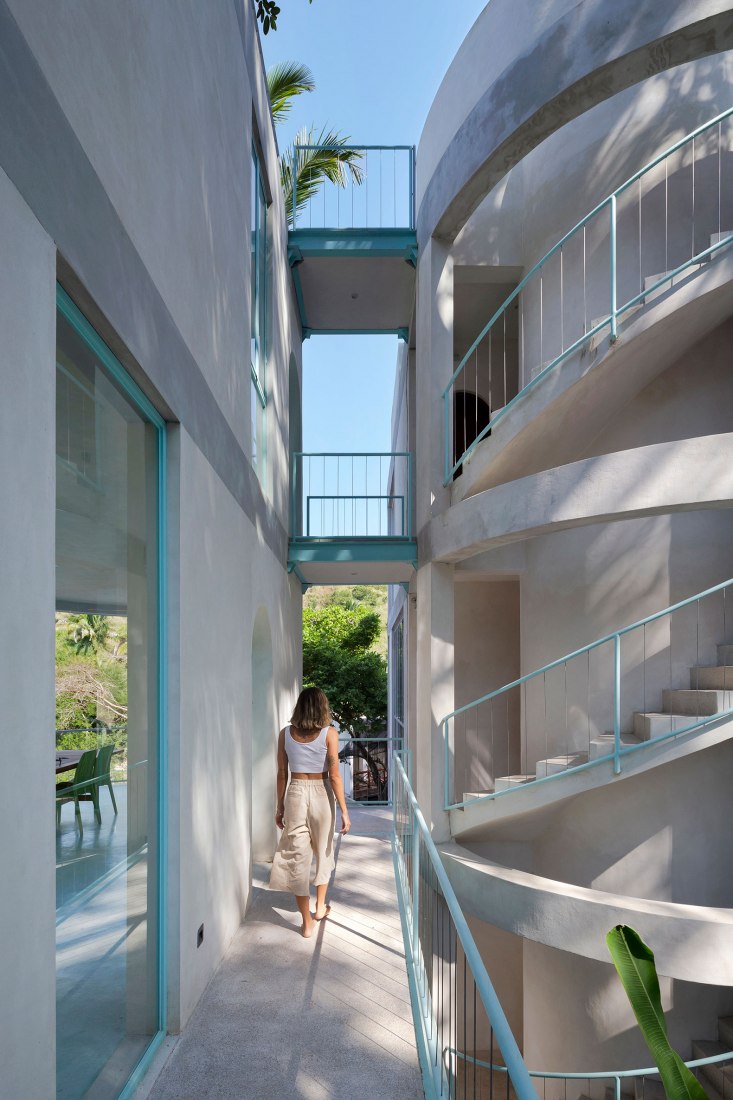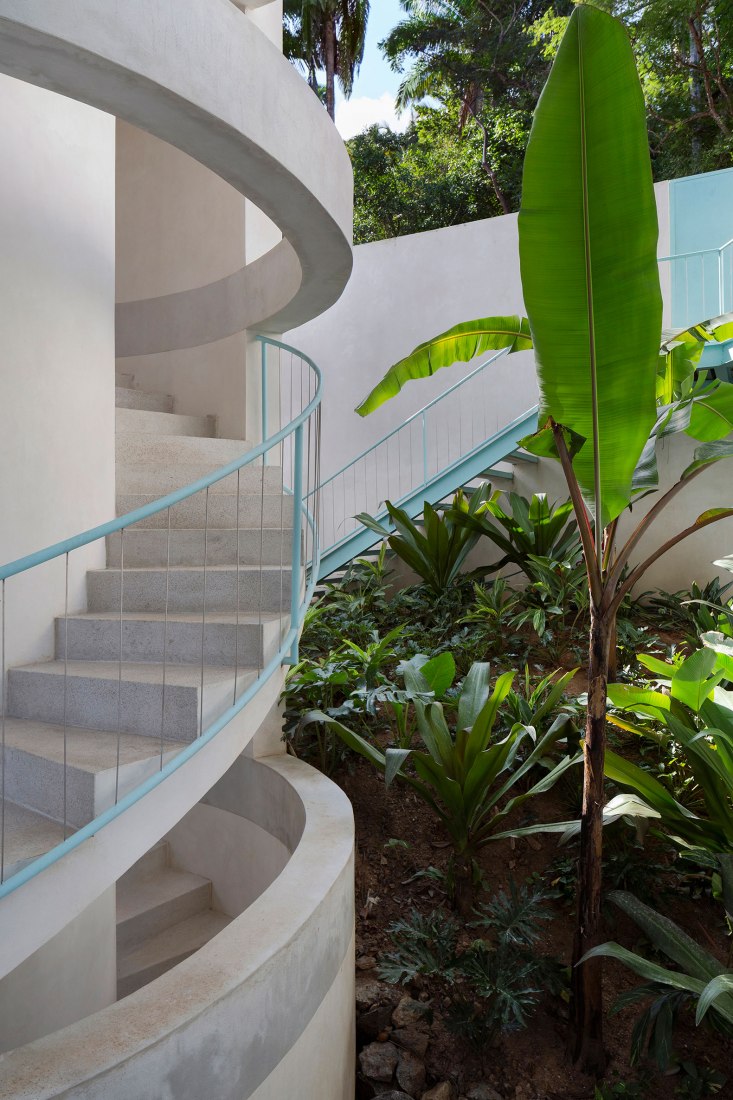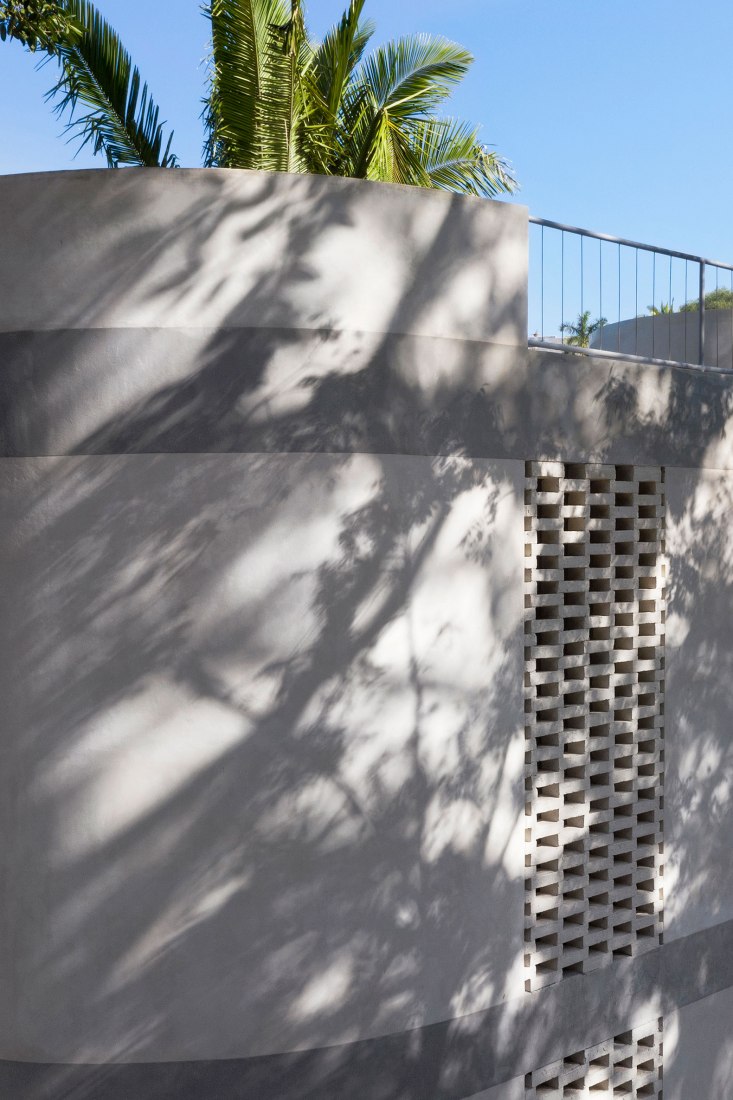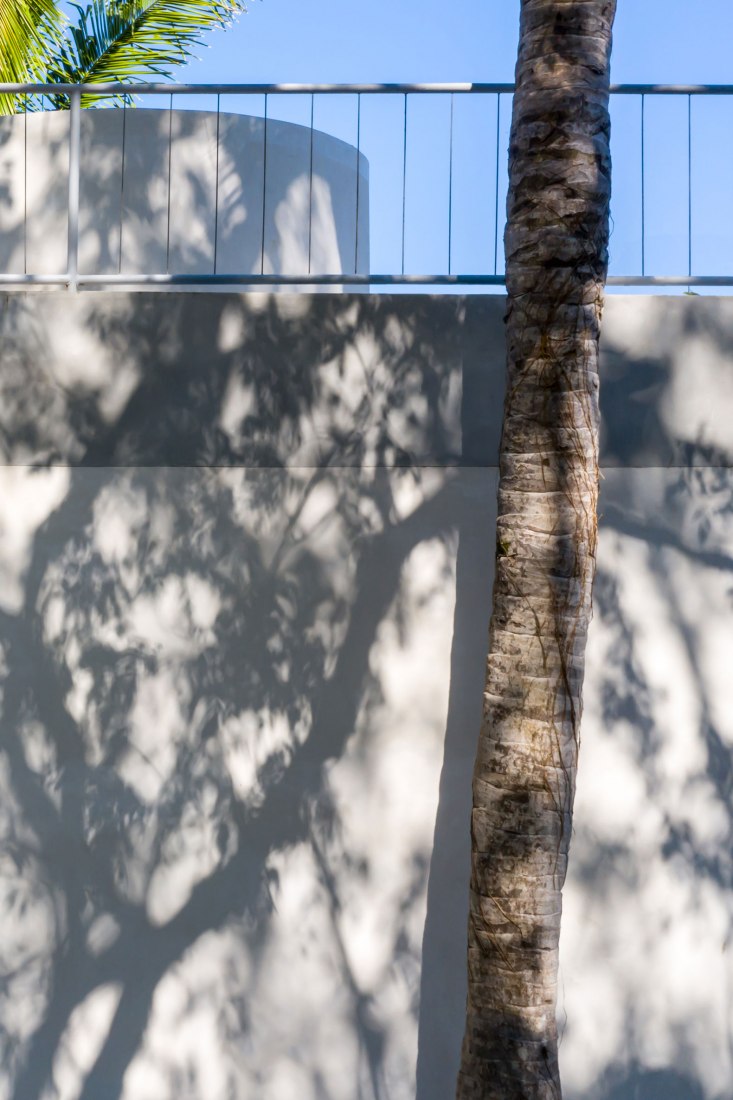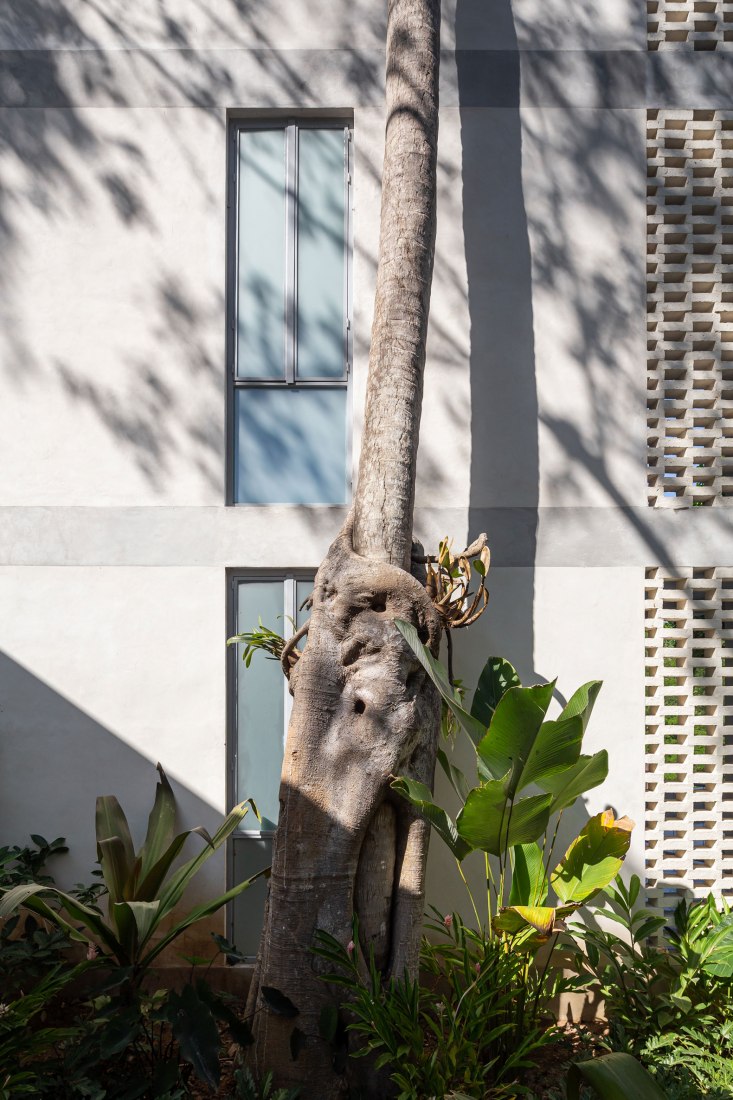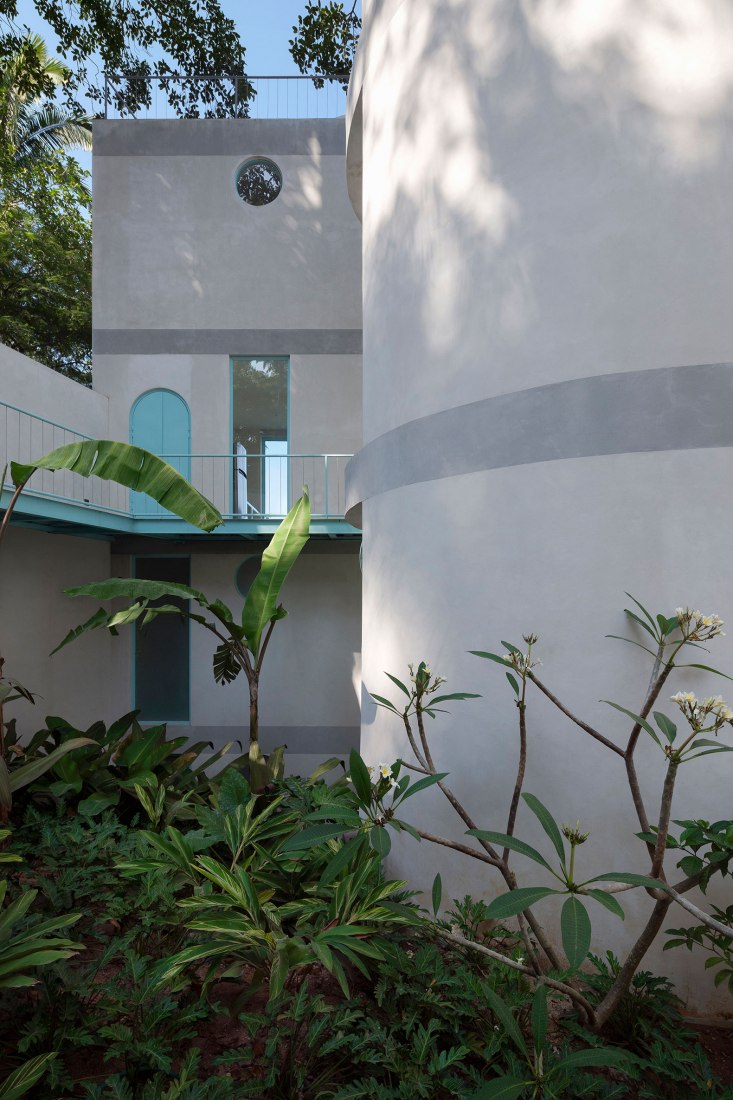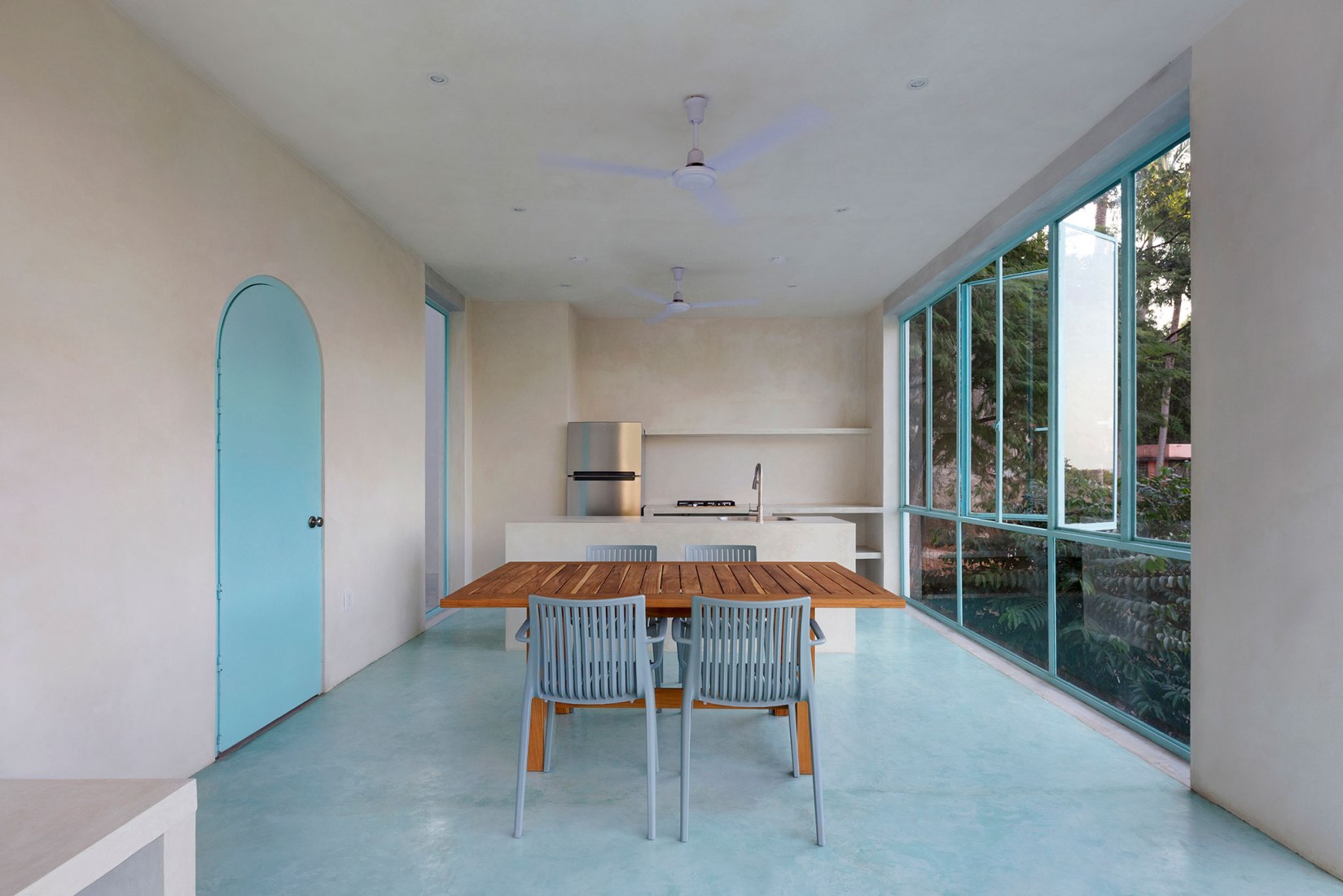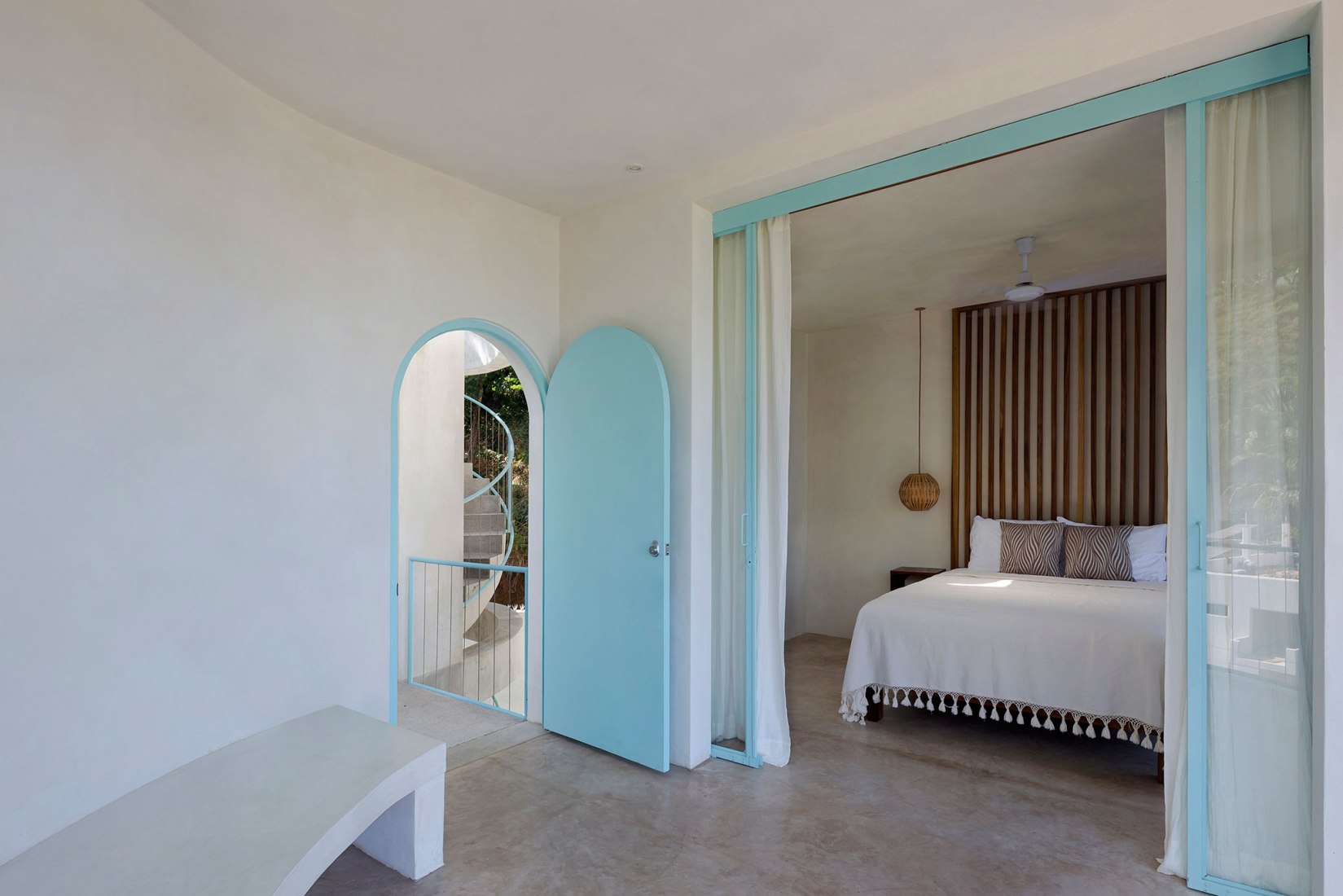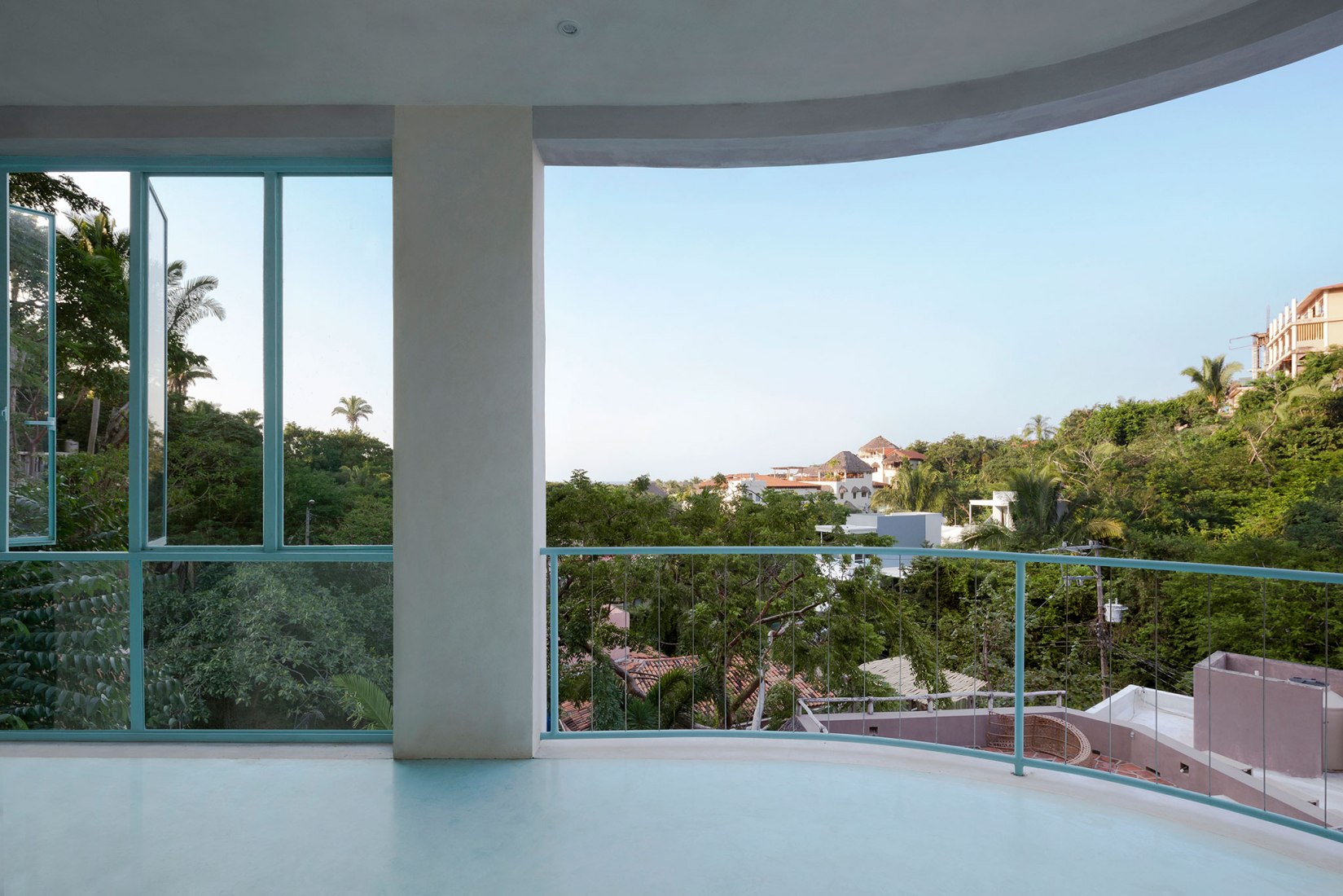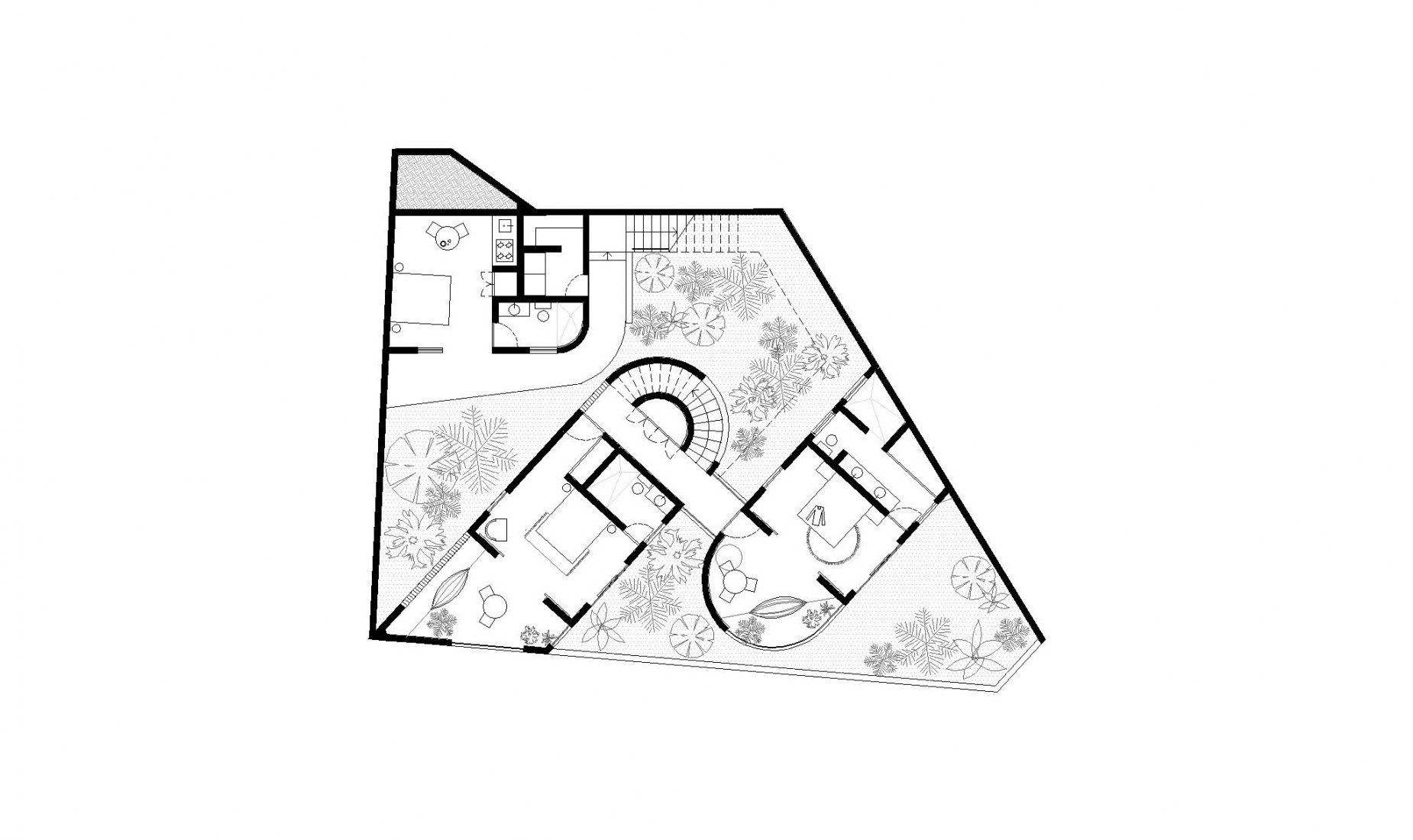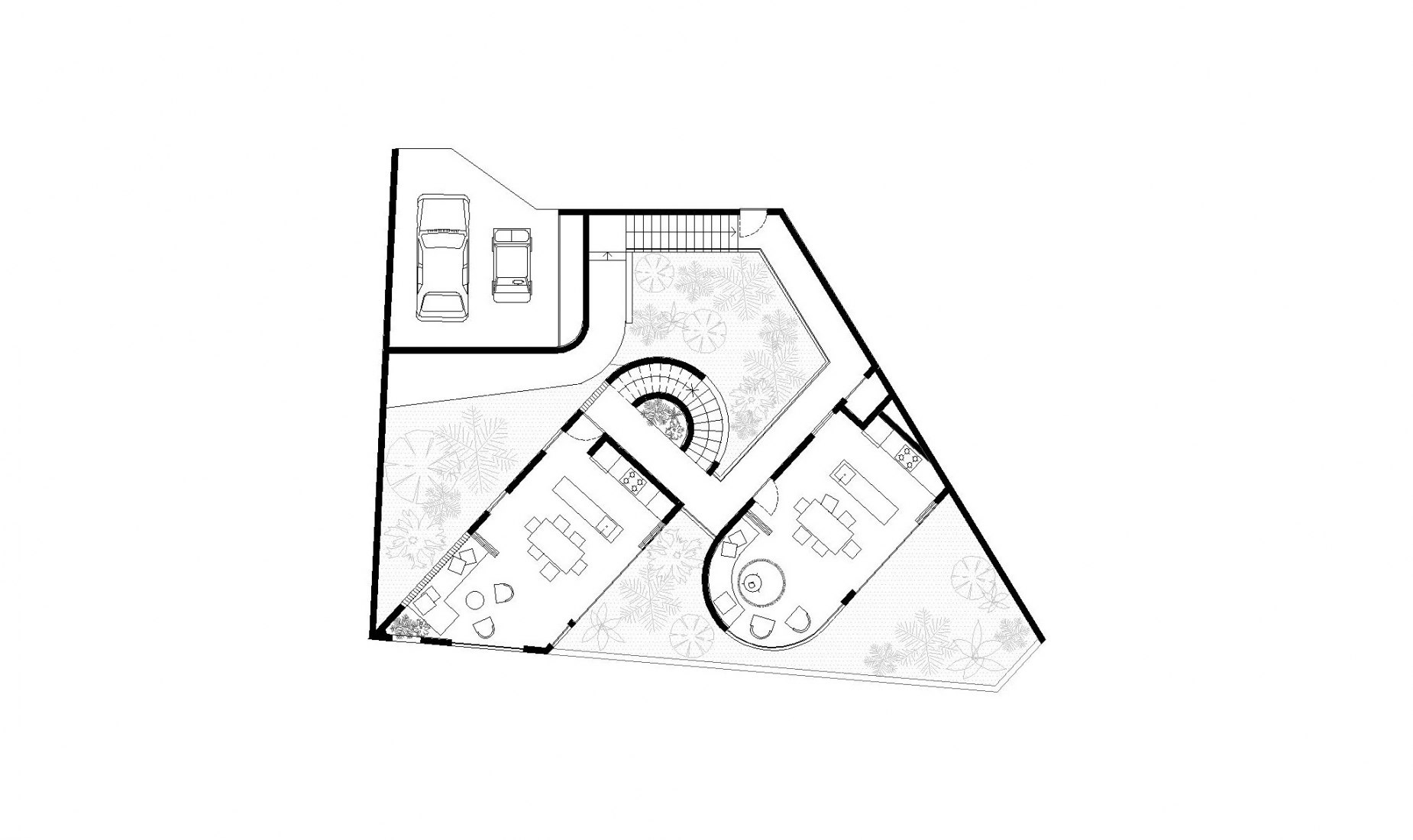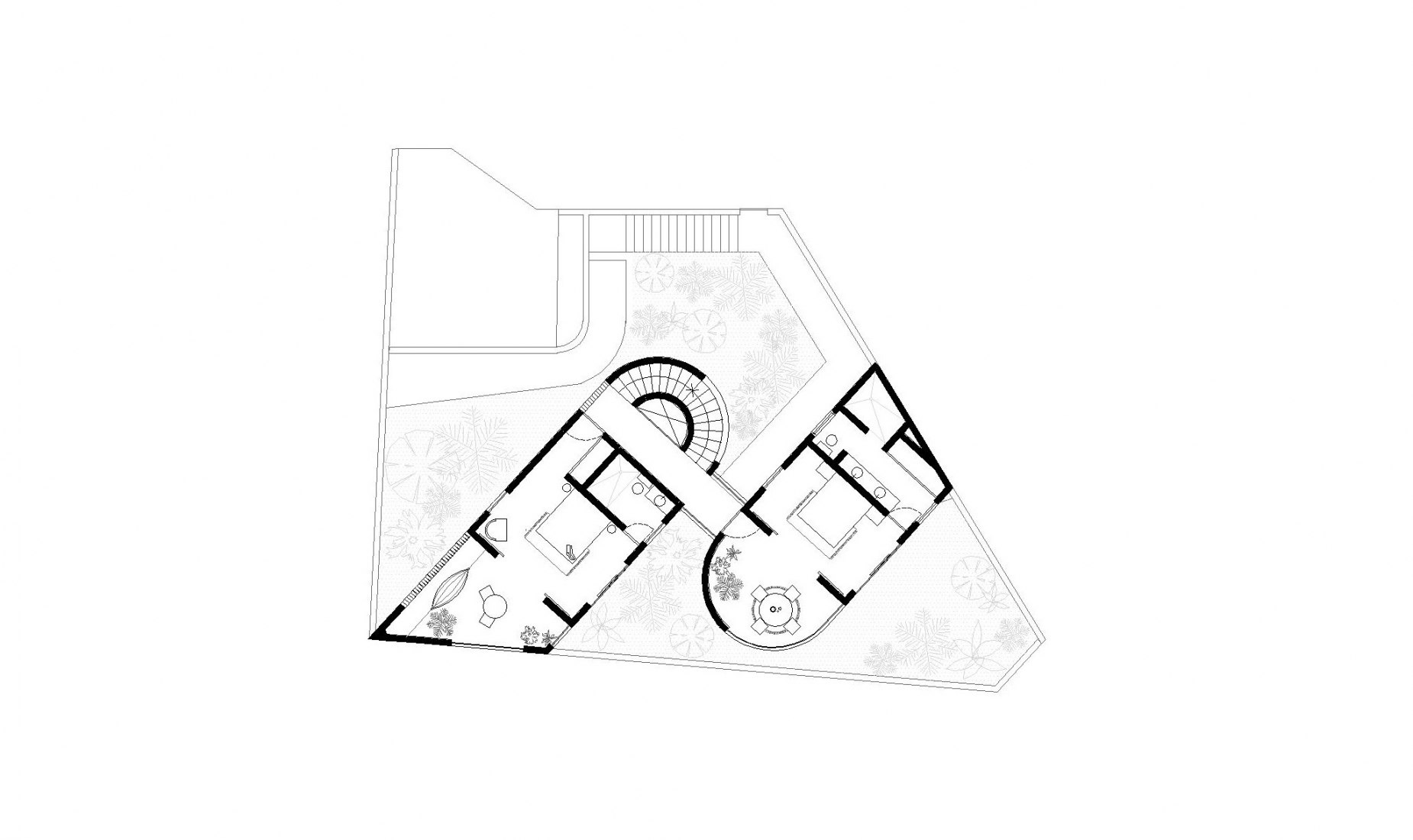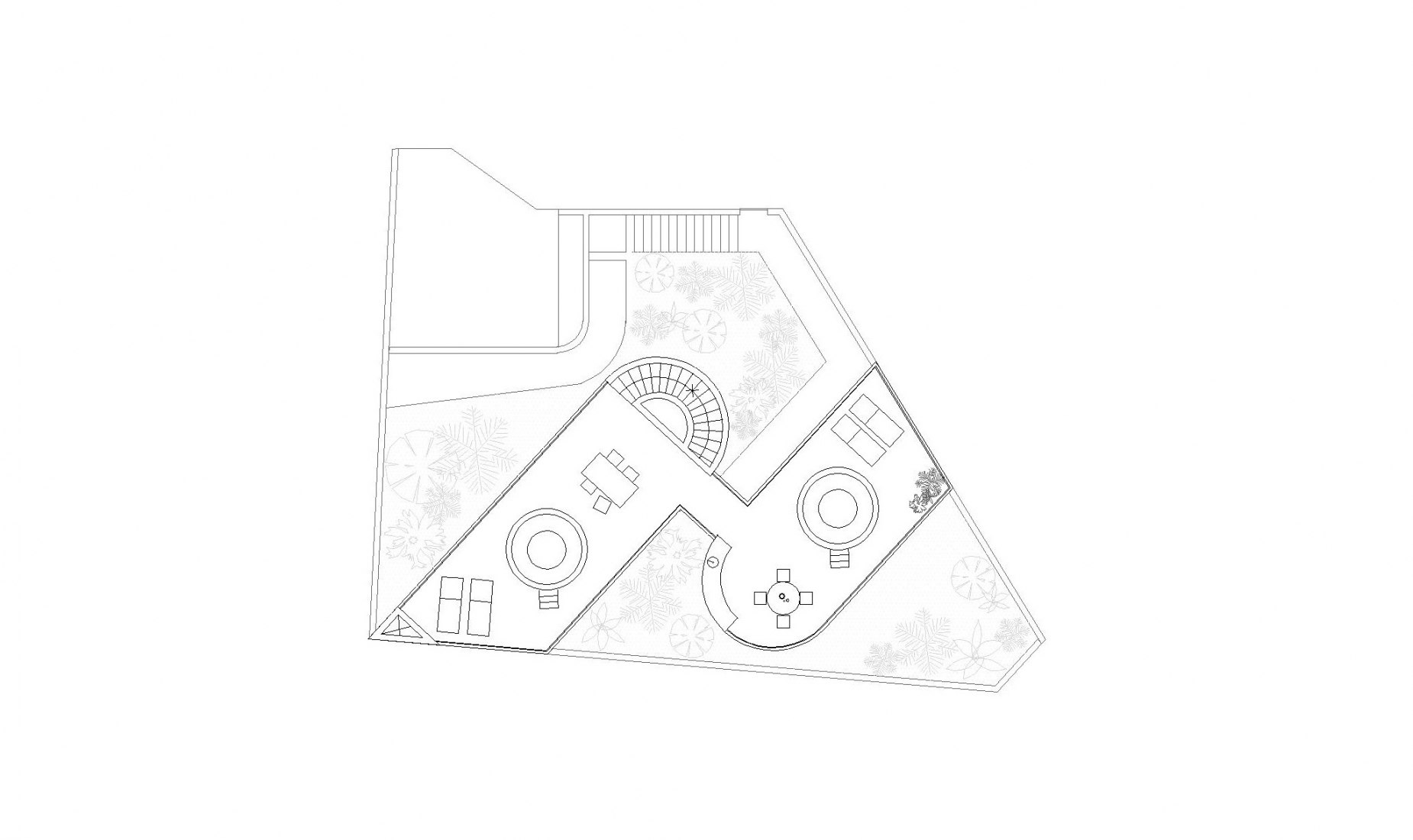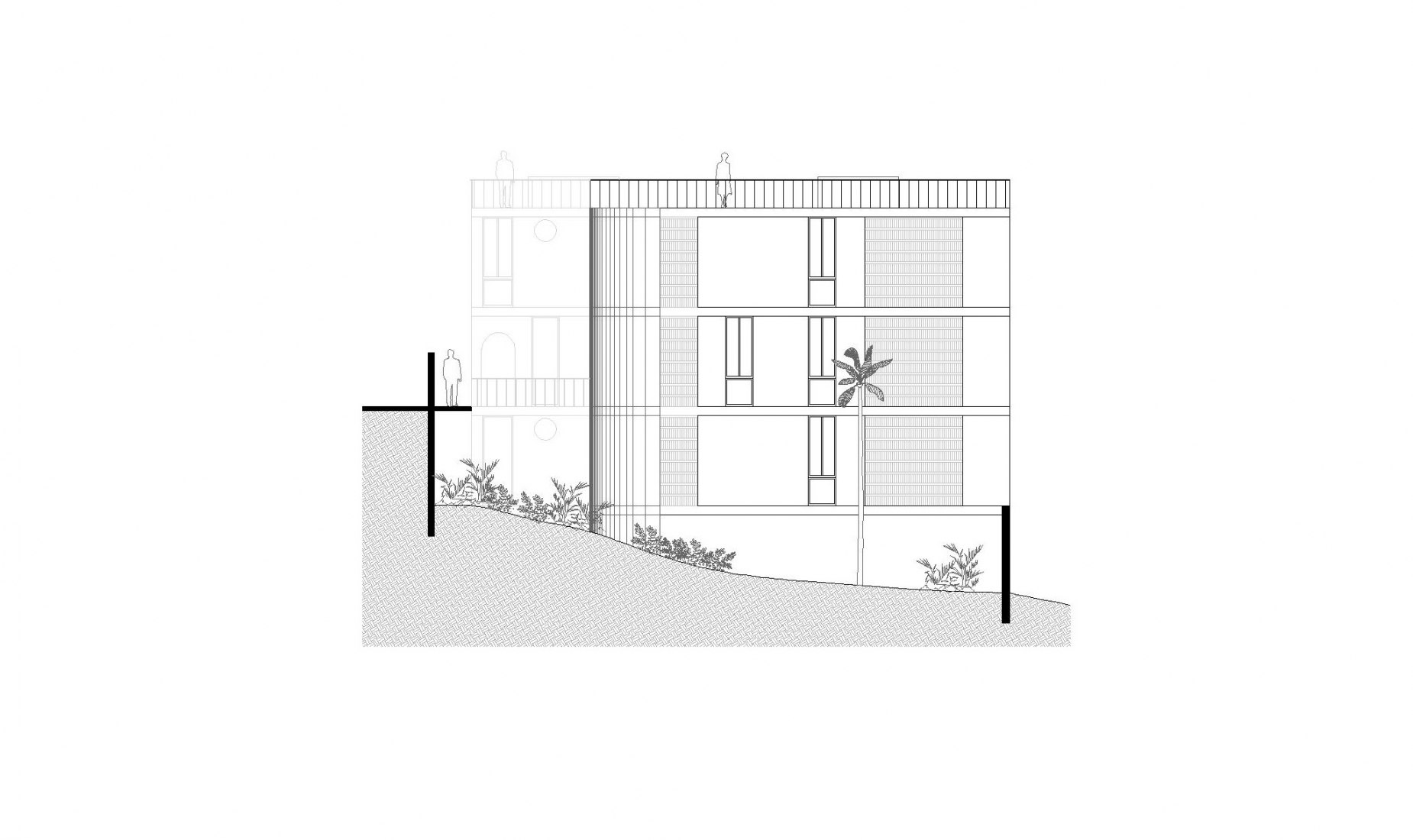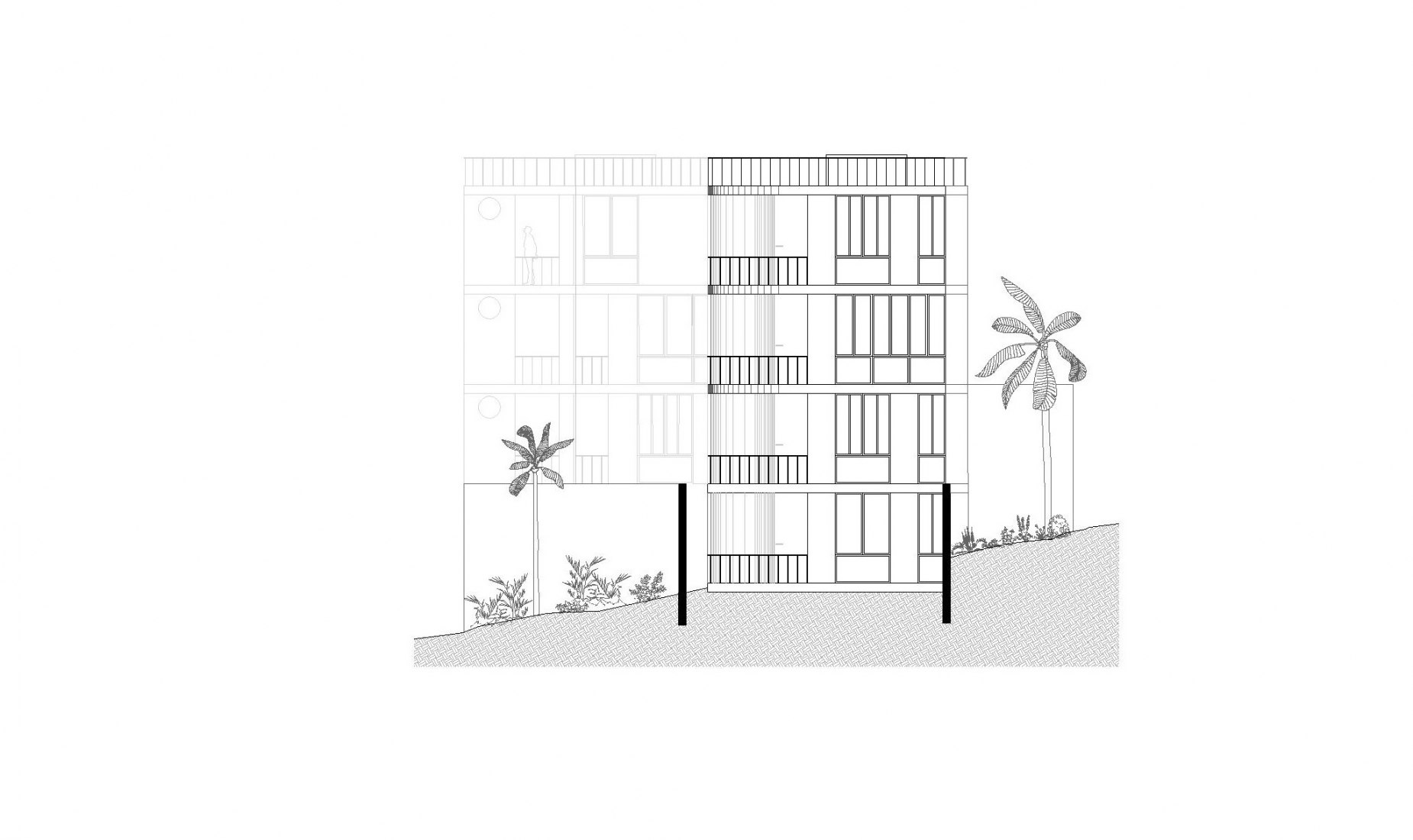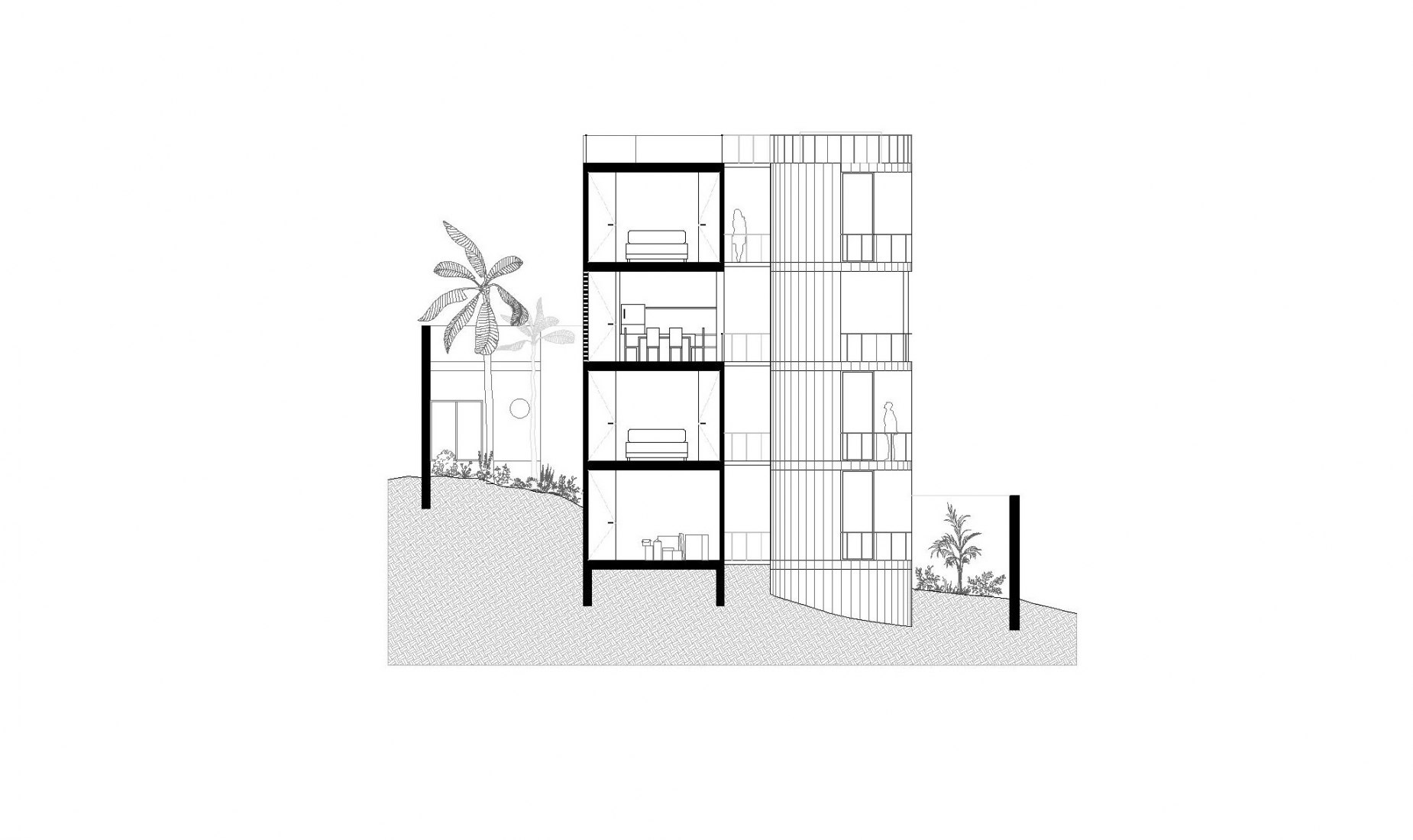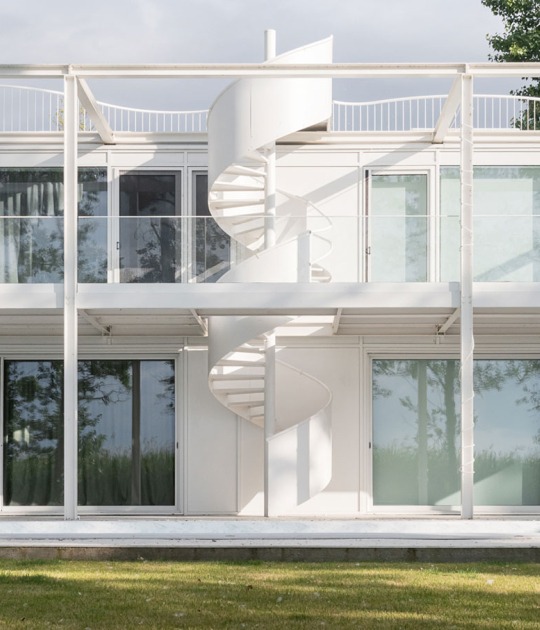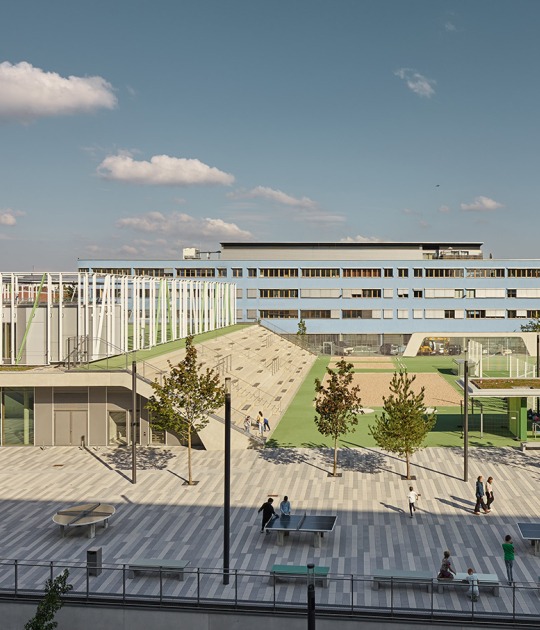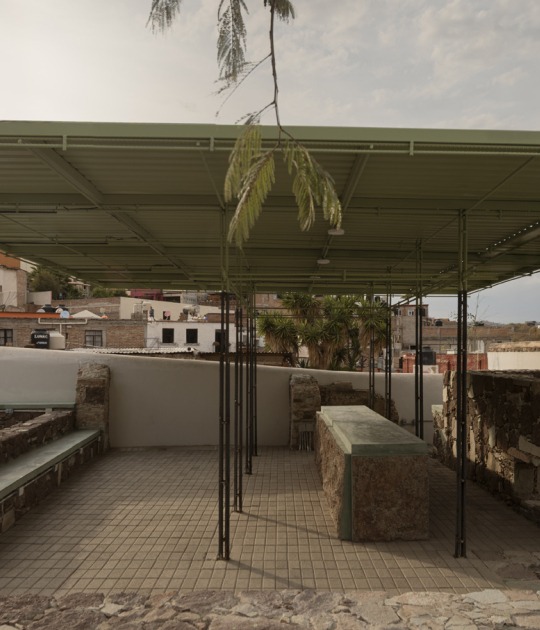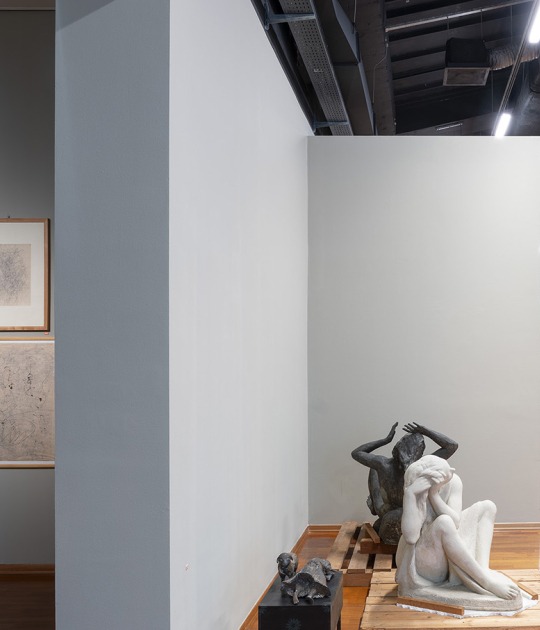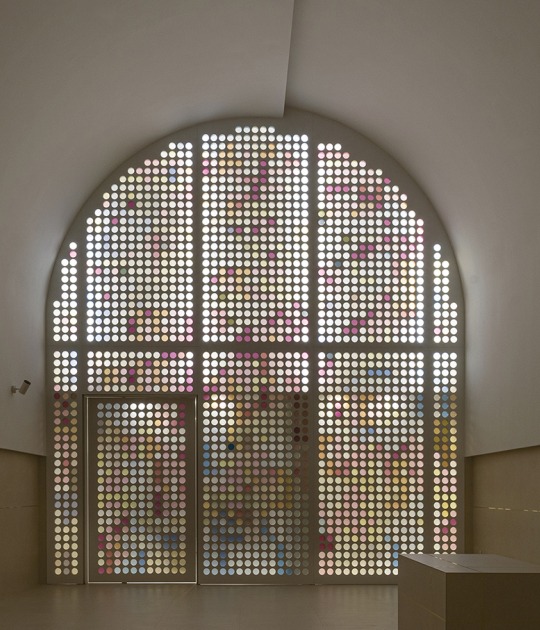It is a hybrid between housing and hotel was baptized as Chiripa and designed by Palma. The complex is made up of two volumes that provide the best views of its surroundings (of the garden and the bay), organizing its program in such a way that the common space is located on the access level, which is the intermediate level since it is accessed by the highest part of the plot. The bedrooms are located on the upper level and on the lower levels. From the roof terrace, you can enjoy the views of the surroundings.
The complex is open and permeable to the landscape at all levels, allowing a more direct dialogue with the nearby natural environment. In relation to the materials, it is worth highlighting the use of stucco on the walls, in pastel colors, which generate canvases on which the shadows projected by the vegetation are drawn.
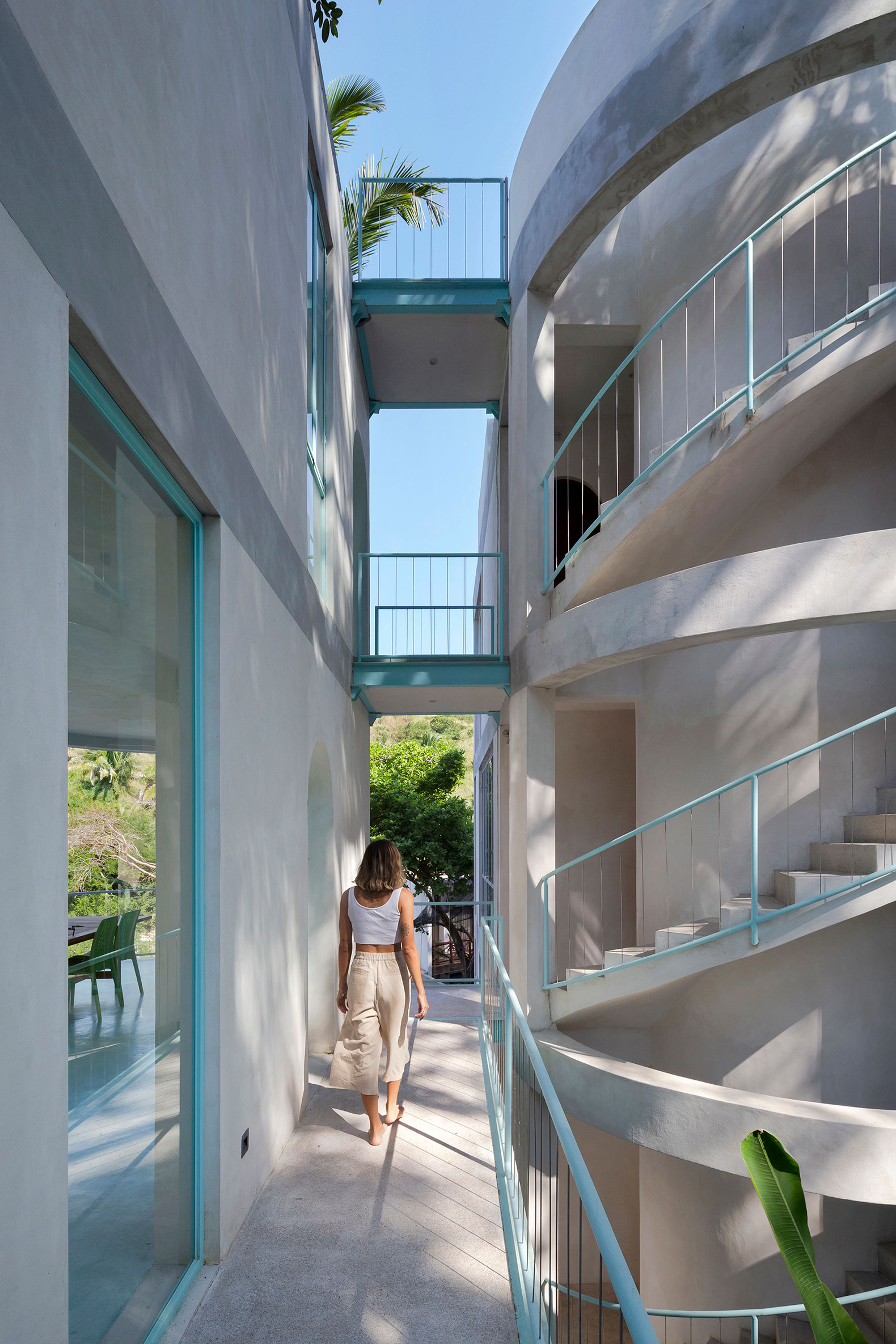
Chiripa by Palma. Photograph by Luis Young.
Description of project by Palma
Chiripa is a project that seeks to experiment with the way users relate to each other in an undefined typology, a hybrid between house - apartments - hotel. 6 units that, depending on the needs of the visitors, can be used in different configurations, constantly modifying the way in which they are inhabited.
The proposal consists of 2 volumes that seek to obtain the best views of the Sayulita bay. They are placed facing each other and are offset in opposite directions to allow unobstructed views, privacy and cross ventilation, and natural lighting.
The footprint of the building is 100m2 total, where the habitable square meters are the same for both volumes, 40m2 each. Although only 2 levels are visible from the front facade, the steep slope of the site allows the implementation of 2 more levels below street level.
Access to the project is at the top of the lot, through a walkway that rises above the central garden, which serves as the entrance hall to the complex.
At the end of the walkway is an open staircase, in the shape of a half-circle, which serves both blocks. The two volumes are connected by a series of bridges overlooking the central garden on one side and the bay on the other.
The architectural program for both volumes is distributed as follows, the common area located at the access level, the intermediate level of the volumes (0). The rooms are located on the upper level (+1) and lower levels (-1, -2). Finally, on the rooftop, each volume has a terrace with a small pool to enjoy the views of the ocean. All levels have a covered terrace at the south end of the building, which becomes an extension of the common areas and bedrooms.
The exposed beams and slabs visually contribute to reducing the scale of the project. The implementation of stucco on the walls, in an off-white tone, serves as a backdrop for the shadows cast by the vegetation growing in the different green areas of the complex.
